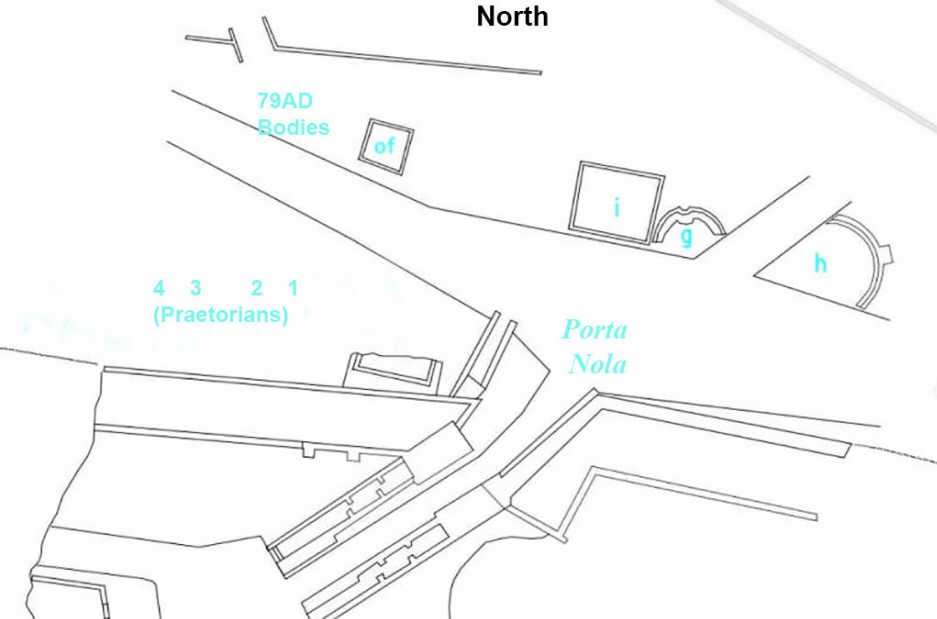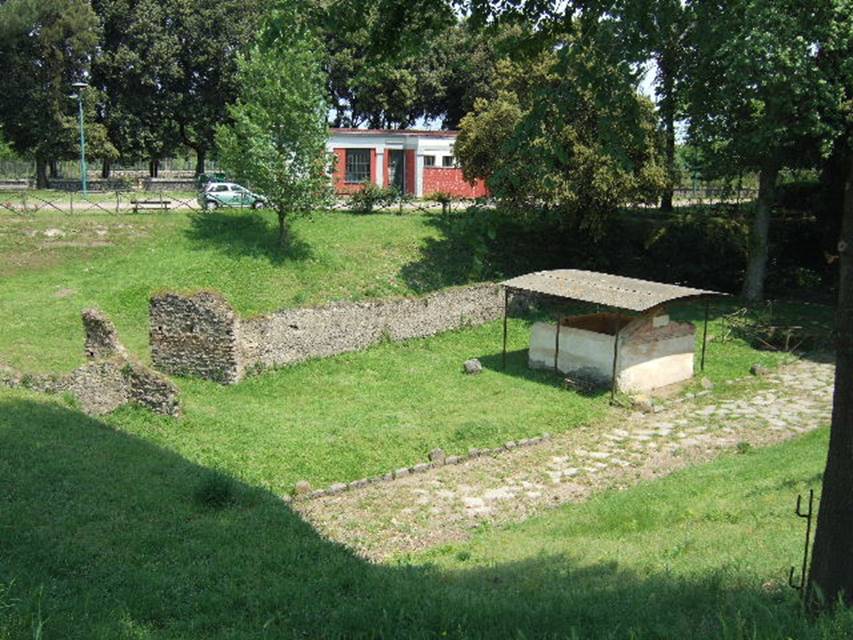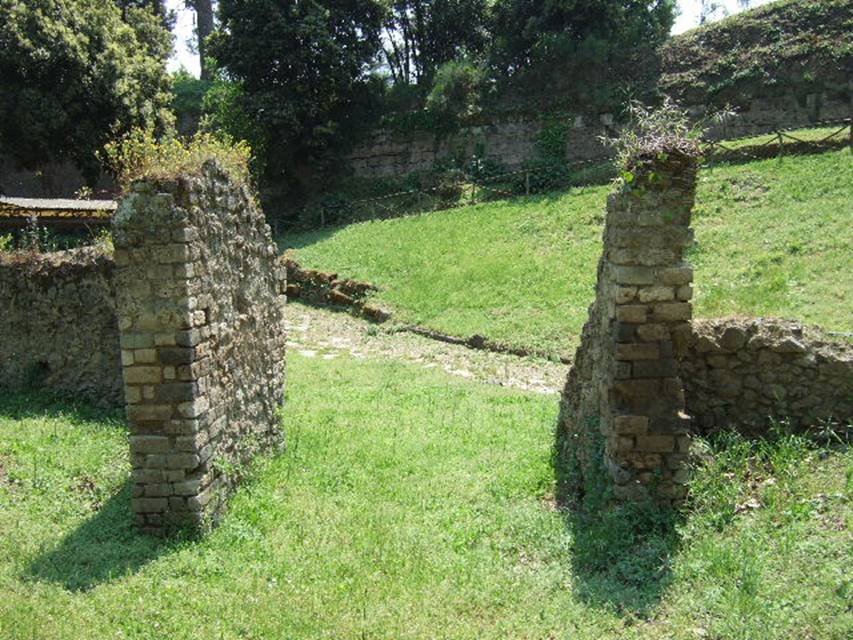Pompeii. Necropoli di Porta Nola. Nola Gate Tombs
Pompei. Necropoli di Porta Nola. Tombe della Porta di Nola
Pompeji. Nekropole von Porta Nola. Nola-Tor-Gräber

Pompeiiinpictures plan of the tombs at the Pompeii Porta Nola or Nola Gate.
Each tomb has a specific page on our site with information and photographs.
If your screen is large enough (more than 853px wide) press the tomb you want on the plan to see the pictures.
If you are on a smaller screen such as a phone or tablet you can use the links below to see the pictures.
Plan courtesy of John Dobbins and Pedar Foss, 2008, World of Pompeii, Routledge, Oxford.
NG1 Praetorian; Lucius Betutius Niger, son of Quintus
NG2 Praetorian; An unknown soldier who served 11 years
NG3 Praetorian; Lucius Manlius Saturninus, son of Quartus
NG4 Praetorian; Sextus Caesernius Montanus, son of Spurius
NGG Schola of Aesquillia Polla
NGH Schola tomb with Dionysus symbols, to east of ancient road to Nola
NGI Tomb garden or bustum?
NGOF Tomb of Marcus Obellius Firmus
Bodies 15 bodies found in front of a gate and down to and on the tufa block road
Thirty-six urns were also found in the pomerial area south-east of the gate.
These were the so-called culinae, burials of poor people.

NGOF Pompeii. May 2006. Tomb of M. Obellius Firmus and ancient roadway running past the front.
An ancient wall is to the rear with a gateway in it. In front of this is the area where fifteen bodies were found and casts taken.
See De Caro, S., 1979. Scavi nell'area fuori Porta Nola a Pompei in Cronache Pompeiane V. p. 95-101, figs. 25, 26.
The BSR excavation of 2016 of the area immediately to the north and west of the tomb of Marcus Obellius Firmus aimed to understand the role of a tufa wall built 5 m to the north of the tomb.
The wall was initially exposed by the excavations of 1908 and was interpreted as demarcating the pomerium of the city.
This hypothesis was later challenged following the discovery of a gateway in the wall and a beaten-earth road leading from the basalt road that runs around the city.
The structures were interpreted as possibly forming part of the pagus set aside for the tomb of Obellius Firmus, one of the most powerful families in Pompeii at the time of the AD 79 eruption.
Following the clearance of a shallow level of topsoil and some lapilli, a series of deposits were recorded which contained the clearance of material from inside an ustrinum, including fragments of a funerary bed, ash and charcoal. Furthermore, immediately to the north of the tomb of Obellius Firmus, at a depth of 0.77m, an ustrinum cut into the ground was discovered.
To the west of the tomb a further stretch of a beaten-earth road was exposed which led from the basalt road through the small gateway.
The initial study of the stratigraphy of the area appears to indicate that the area underwent a substantial reorganisation after AD 62.
See BSR Porta Nola reports on Fasti.org

NGOF Pompeii. May 2006. View from gateway in tufa wall north-west of tomb looking towards the city walls near the Nola Gate.
According to De Caro, “The group of people found in the recent explorations was composed of 15 individuals, all of whom fell in the space of a few metres”.
See De Caro S., 1976. Scavi nell’area fuori Porta Nola a Pompei: Cronache Pompeiane V, (p.95-101).
The bodies were found in front of the gateway and down to and on the tufa block road.
A beaten earth road ran through the gateway and joined the tufa block road.

Cast of body found outside Porta Nola near tomb of Obellius Firmus.
See De Caro S., 1976. Scavi nell’area fuori Porta Nola a Pompei: Cronache Pompeiane V, (fig. 25).